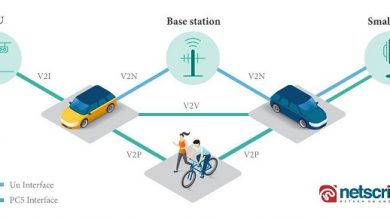Connected Mobility Continues its Steady Growth in India; Telecom Sector Supports

Over the past couple of years, the rapidly developing telecom sector has helped the global automotive industry gain necessary thrust in product development, features and in changing the overall in-vehicle environment. Connectivity features have not only made the drive pleasurable but also made the car more safe and secure.
Moreover, with the transition towards 5G, the future of autonomous driving seems brighter than ever. India’s automotive market is lagging in the race to implement upgraded features and services when compared to other automotive markets such as China, US, Japan and Europe. However, auto OEMs are offering more latest features such as embedded connectivity, advanced driver-assistance systems (ADAS), shared mobility and various subscription-based services leveraging the growing 4G footprint and laying the foundation for broader adoption of advanced ADAS features when 5G rolls out.
Connectivity trends: 45% of cars will be connected by 2027
India saw its first connected car with embedded telematics with the launch of the MG Hector in 2019. The car was capable of standalone internet connectivity, which helped the company provide more than 50 connected features as part of the package. Soon, Hyundai and Kia followed with their embedded connectivity car models Venue and Seltos respectively. The rising demand for safety and entertainment features is forcing OEMs to bring such cars. Moreover, Maruti Suzuki, which holds the lion’s share of India’s passenger vehicle market, has been providing embedded connectivity services as an add-on feature as the Indian market is very price sensitive. Connected car penetration in India reached 17% in 2021 and we expect it to reach 45% by 2027.
Intersecting with the growing adoption of electrification and connectivity, the global automotive industry is transitioning towards autonomous mobility. However, autonomous mobility is still in a nascent phase in India. MG Motor is one of the few brands in India to introduce some autonomous features at Level 1 (L1) autonomy, such as in the MG Gloster. Some other models such as MG’s Astor and Mahindra’s XUV 700 are offering advanced autonomy features at Level 2 (L2). These OEMs have kickstarted the connectivity and autonomous revolution in India, pushing incumbents to go back to the drawing board.
Telecom operators are also trying to gain from this momentum and partnering with OEMs directly. Airtel and MG Motor have joined forces to develop connectivity solutions for the MG Hector. Vi, which has teamed up with Hyundai and Kia, was the first to introduce eSIM in cars with Hyundai’s Venue model. Recently, Reliance Jio entered a partnership with MG Motor for futuristic connected car solutions. Jio also offers an eSIM for the MG Astor. Again, we can expect strong competition between top telecom operators to catalyze the connected car revolution with partners such as Qualcomm, Rolling Wireless, LG, Continental and Denso. This should drive the overall connected car adoption to 45% of the total cars sold in the next five years.
IVI trends: 2 in 3 top-selling car variants have touchscreen infotainment display
In the present times, new technologies in the automotive market are offered using a price skimming strategy. New features are first introduced in high-end cars, and once the price comes down, the features become available in mid-end and low-end cars. The Indian automobile market has been a growing market for In-Vehicle Infotainment (IVI). According to Counterpoint’s latest research, 66% of the top-selling car variants offer touchscreen display for infotainment while more than 80% offer digital cluster.
In India, for many years, cars only supported basic audio systems like one-din and two-din, but the scenario has changed now. Features like navigation, human-machine interface, advanced music system and internet connectivity have changed the way consumers perceive innovative features related to in-car infotainment.
IVI was mostly available in the premium trims a few years ago. But as the technology scaled and solutions got cheaper, IVI entered low- to mid-end cars such as Maruti’s Baleno, Tata’s Tiago and Hyundai’s Grand i10 NIOS.
Most of the IVI solutions are passive and do not have dedicated internet connectivity. The infotainment source is still mirroring phones or tethering the internet from the phones.
Many international players like Bosch, Harman, Continental, Valeo and Visteon have partnered with Indian auto OEMs and invested heavily in the development of IVI for Indian cars. Features like reliable voice recognition system and personalization of in-car environment are driving growth in this segment. Moreover, the development of steering-based controls, voice recognition technology and better map services with voice assistance have reduced the driver’s distraction a lot.
The display used in the IVI system has also improved a lot in recent times. The present OLED display with touch-sensors is a massive upgrade from the early TFT display with buttons. Even the size of the IVI display has improved. Almost every car in India costing above Rs 10 Lakh is equipped with a 7” or bigger display. In coming times, we will also see the penetration of Flex-OLED, which will make it possible to integrate HUD with IVI. Apart from hardware development, the IVI software has also improved a lot. Earlier, the IVI system used to only support Android Auto, Amazon Alexa and Apple Carplay, which could only mirror the tethered smartphone screen on the IVI display. But now the auto OEMs have their proprietary connectivity platform embedded in the IVI system that supports a wide range of features like geo-fencing, location updates, weather updates, voice command systems, entertainment services like music on the go, and many other services apart from the basic Android Auto, Amazon Alexa and Apple Carplay.
Source: Counterpoint India Automotive Electronics Market, Q4 2021
With the development and promotion of IVI in cars, many foreign companies are partnering with auto OEMs to provide tailored services. A few months ago, HERE, a leader in location services, partnered with SAIC to provide such services for MG cars in India. The development of the IVI system is not only about providing new technologies and upgraded features inside cars but also about creating an ecosystem that will lead the way towards a digital cockpit system.
Era of digital cockpit not too far
With the rapid development of the IVI system, coupled with increased penetration of embedded connectivity, the era of the digital cockpit is not too far. A modern-day digital cockpit is equipped with a lot of human-machine interfaces (HMIs) like best-in-class infotainment (IVI), an all-digital instrument cluster, a heads-up display (HUD) and rear-seat entertainment (RSE), with embedded connectivity being the main element working behind the curtain. A lot of research and development is being done globally on the digital cockpit and making it more affordable.
Although this ultra-modern feature is not common even in the matured auto markets like Europe, China and the US, still global carmakers are vying to design next-generation digital cockpits with a wide range of advanced features. The development of safety features like ADAS is redefining the cockpit design and system.
Needless to say, we will not see modern digital cockpits inside cars in the mid-price and economy segments soon. But there are a few luxury brands like BMW and Audi which are offering digital cockpit features as part of an add-on service in some of their models for the Indian market. Apart from the premium and luxury segments, we might see digital cockpit systems in cars in the high-price segment, like the MG Gloster, Toyota Fortuner and Tata Harrier, but the real challenge is in making the system affordable for mid-sized and small cars. The rapid commercialization of the technology associated with smart devices and price reduction of LCD and OLED displays will facilitate a quicker implementation of digital cockpits in cars in the high- and premium-price segments.
India is lagging behind in the adoption of such technologies, but we are making steady progress with government help. Over the last decade, the ease of doing business in India has improved greatly. As a result, many foreign automotive companies are setting up bases in India. Chinese OEMs like SAIC and BYD are already operating in India while companies like Tesla are keen to enter the country’s automotive segment and redefine technology space in this sector. Ford, which had left the Indian market, now wants to re-enter with its EVs. Many Indian start-ups are also playing a role in boosting the automotive sector by developing and introducing new technologies. Moreover, with the increase in the adoption of EVs, the penetration of advanced automotive technologies will see steady growth. Therefore, we can say that the future of the automotive sector in India, especially in terms of adoption of technologies, is quite bright.
Author:

Soumen Mandal
Senior Analyst (IoT, Automotive & Devices Ecosystem)
Counterpoint Technology Market Research
Soumen Mandal is a Senior Research Analyst who is tracking IoT, Automotive and the Telecommunication ecosystem at Counterpoint Technology Market Research. He is interested in tracking IoT applications, connections, components, emerging technologies, smart automotive technologies, electric vehicles, regulation changes and competitor activities around the world. He started his career as an Energy Analyst with Manikaran Power Ltd. He is based in Gurgaon and holds an Electrical Engineering degree and MBA in Marketing & Finance.
Published in Telematics Wire





